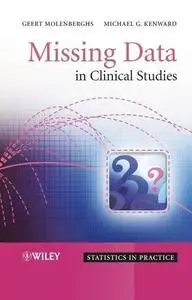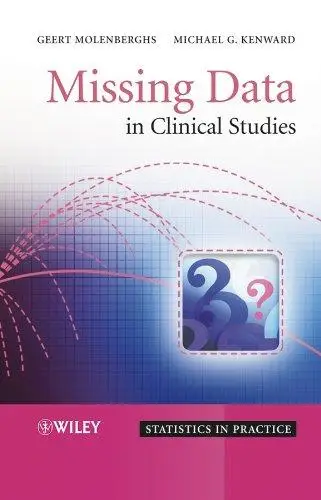Missing Data in Clinical Studies By Geert Molenberghs, Michael G. Kenward(auth.)
2007 | 508 Pages | ISBN: 0470849819 | PDF | 13 MB
2007 | 508 Pages | ISBN: 0470849819 | PDF | 13 MB
Missing Data in Clinical Studies provides a comprehensive account of the problems arising when data from clinical and related studies are incomplete, and presents the reader with approaches to effectively address them. The text provides a critique of conventional and simple methods before moving on to discuss more advanced approaches. The authors focus on practical and modeling concepts, providing an extensive set of case studies to illustrate the problems described. Provides a practical guide to the analysis of clinical trials and related studies with missing data. Examines the problems caused by missing data, enabling a complete understanding of how to overcome them. Presents conventional, simple methods to tackle these problems, before addressing more advanced approaches, including sensitivity analysis, and the MAR missingness mechanism. Illustrated throughout with real-life case studies and worked examples from clinical trials. Details the use and implementation of the necessary statistical software, primarily SAS. Missing Data in Clinical Studies has been developed through a series of courses and lectures. Its practical approach will appeal to applied statisticians and biomedical researchers, in particular those in the biopharmaceutical industry, medical and public health organisations. Graduate students of biostatistics will also find much of benefit.Content: Chapter 1 Introduction (pages 1–10): Chapter 2 Key Examples (pages 11–25): Chapter 3 Terminology and Framework (pages 27–37): Chapter 4 A Perspective on Simple Methods (pages 39–54): Chapter 5 Analysis of the Orthodontic Growth Data (pages 55–66): Chapter 6 Analysis of the Depression Trials (pages 67–74): Chapter 7 The Direct Likelihood Method (pages 75–92): Chapter 8 The Expectation–Maximization Algorithm (pages 93–104): Chapter 9 Multiple Imputation (pages 105–117): Chapter 10 Weighted Estimating Equations (pages 119–134): Chapter 11 Combining GEE and MI (pages 135–143): Chapter 12 Likelihood?Based Frequentist Inference (pages 145–162): Chapter 13 Analysis of the Age?Related Macular Degeneration (pages 163–170): Chapter 14 Incomplete Data and SAS (pages 171–182): Chapter 15 Selection Models (pages 183–213): Chapter 16 Pattern?Mixture Models (pages 215–247): Chapter 17 Shared?Parameter Models (pages 249–251): Chapter 18 Protective Estimation (pages 253–282): Chapter 19 MNAR, MAR, and the Nature of Sensitivity (pages 283–312): Chapter 20 Sensitivity Happens (pages 313–328): Chapter 21 Regions of Ignorance and Uncertainty (pages 329–352): Chapter 22 Local and Global Influence Methods (pages 353–415): Chapter 23 The Nature of Local Influence (pages 417–430): Chapter 24 A Latent?Class Mixture Model for Incomplete Longitudinal Gaussian Data (pages 431–450): Chapter 25 The Age?Related Macular Degeneration Trial (pages 451–460): Chapter 26 The Vorozole Study (pages 461–481):



